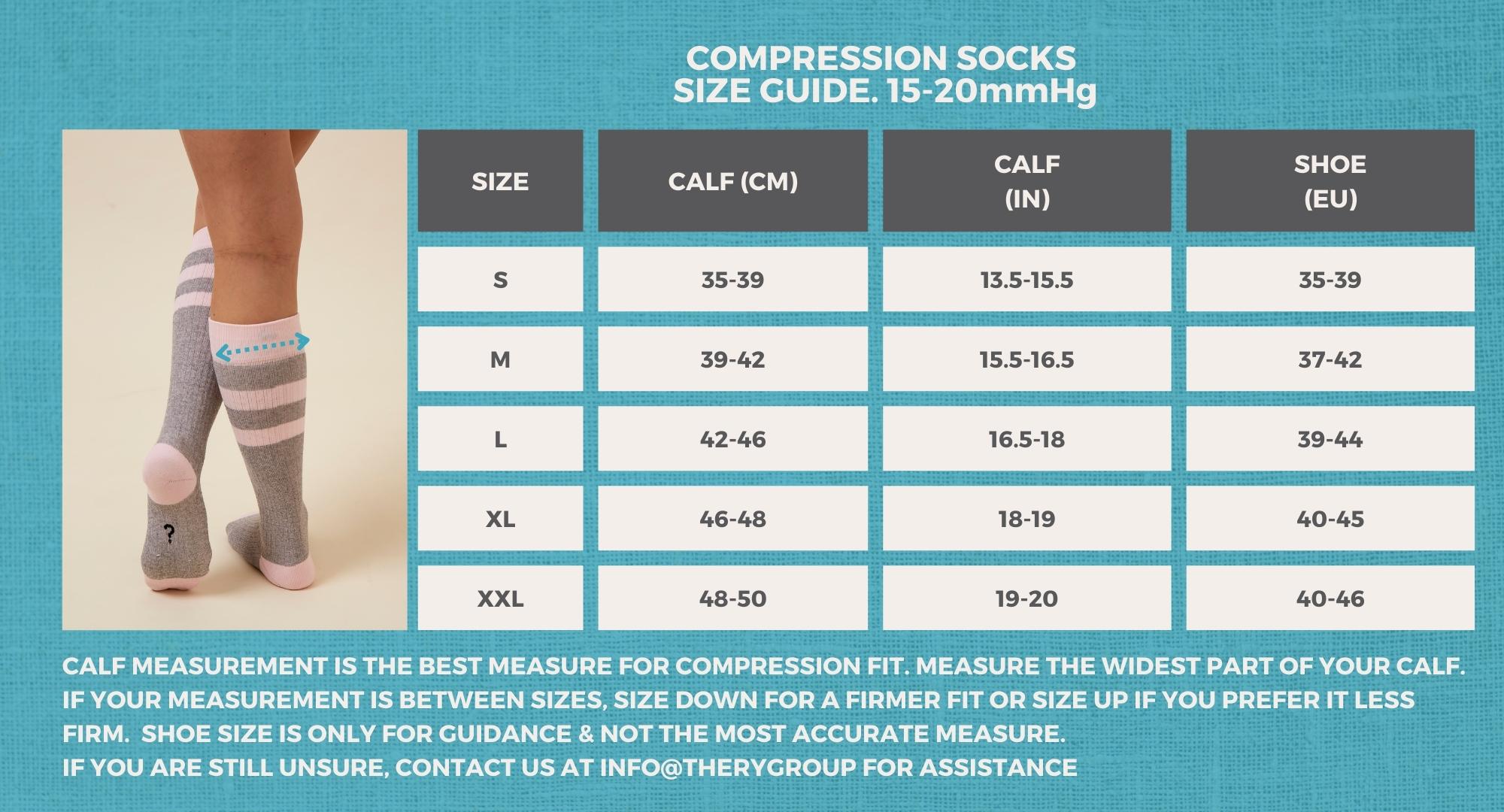Frequently asked
Are these socks good for post C-section surgery in hospital?
Yes they are. They are rated at 15-20mmHg graduated compression which is the same rating as the hospital TED stockings.
What is the difference between the rescuer maternity compression sock and the comforter maternity compression sock?
Our Comforter Compression Socks and Rescuer Compression socks both are rated at 15-20mmHg so offer the same compression benefits. The key difference is in the weight/thickness of the sock with the Comforter Sock being a medium weight and the Rescuer sock being a lighter weight..
The comforter sock also has more cushioning in the footbed. The rescuer sock is thinner and some people prefer it for if they want a less bulky sock for particular shoes.
The decision will come down to your preference for the a particular weight or design. Both are equally comfortable and soft.
Many customers buy both.
Are these suitable for travel if not pregnant?
Our socks were created with extra soft yarns and engineered to be easier to put on which is great for pregnancy but everyone can benefit. The compression socks are 15-20mmHg and suitable for flights, and anytime you may be sitting or standing for long periods of time. They are for everyone.
Are these pregnancy socks suitable for travel/dvt/etc?
Yes our compression socks are 15-20mmHg and are suitable for travel. It is said blood circulation may be compromised if you sit for 4 hours or more so compression socks will help reduce the risk of DVT & blood clots.













Also Bought With

Powered By Graduated Compression To Increase Blood Flow
TheRY leggings feature graduated compression, scientifically tested and medically graded at 15-20mmHg, to help increase blood flow and circulation.
Those who sit more than 4 hours day, circulation can be compromised. Poor blood flow can lead to blood pooling and heaviness and swelling in legs and feet plus other poor health outcomes.
TheRY graduated compression products have been assessed and are listed with the Australian Therapeutic Goods Association (TGA).

Up To 80% Of Pregnant Women Have Insufficient Circulation
Many women are unaware that their circulation is poor. Your pregnant body is working harder than ever and needs to deliver more oxygen & blood to both you & your growing baby.
Your body creates up to 50% more blood & your heart works up to 30% harder during pregnancy. Tiredness, dizziness, fatigue and swelling, are all symptoms of poor circulation.

Maternal Blood Flow Is Vital To The Growth And Development Of Your Unborn Baby.
At 12 weeks the placenta is formed and takes over to deliver essential nutrients from maternal blood flow through the umbilical cord to your unborn baby. It also functions to help remove waste products.
For this reason good blood flow is vital to the growth and development of your unborn baby. To learn more about the role of the placenta and the importance of blood flow to baby you can read more in our blogs.

65% Of Pregnant Women Suffer From Swollen Legs Ankles, Leg & Feet
Poor circulation contributes to blood pooling in the lower limbs and swelling and fatigue. Your body also is holding more water than usual & extra fluid gathers to your lower legs & feet. It can be worse in summer or you've been standing or sitting a lot. The pressure of your growing womb can also affect the blood flow in your legs. Graduated compression helps to improve blood flow and the removal of waste fluids.

28% Of Pregnant Women Will Develop Varicose Veins.
In the first 6 wks Postpartum Women are 3-5X More Likely to Develop Blood Clots.
You are 40% more at risk of developing varicose veins if you suffer from swollen feet. You are also at greater risk of varicose veins during 2nd and subsequent pregnancies, or if you are having multiples. Graduated compression applies pressure to help improve vein function and blood flow. For more for prevention of varicose veins, read our blog.
Postpartum, you are at greater risk of poor circulation. In the first 6 weeks following birth you are 3-5X more likely to develop blood clots and postpartum varicose veins. This is also due to the extra time recovering or sitting nursing your baby when movement is restricted.

Fluid Retention Is Still Common, Even Months After Birth.
The extra fluid volume that occurred during pregnancy and in preparation for birth, can still exist within the tissues in the body.
If you have been induced, you will also have fluids introduced via the hormone & saline drips that are absorbed into the body. The excess fluids in the body result in swelling & puffiness.
Movement & improving blood flow and circulation is one way to assist the removal of waste fluids.










